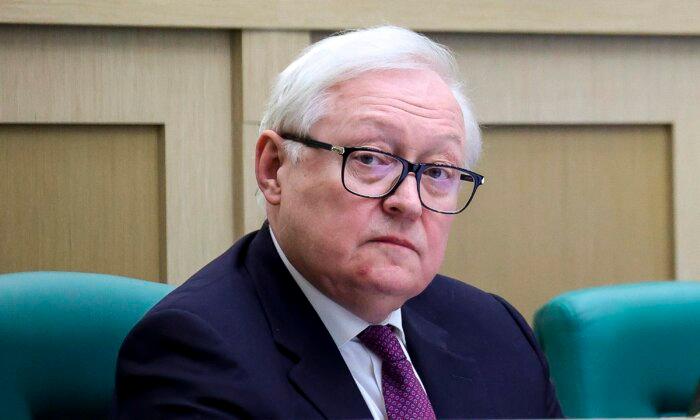Kyiv maintains an active military presence in Russia’s western Belgorod region, which borders northeastern Ukraine, Ukrainian President Volodymyr Zelenskyy has said.
In an April 7 video address, he said that Oleksandr Syrskyi, Kyiv’s top military commander, had recently provided a report on the disposition of Ukrainian forces in both Belgorod and Russia’s neighboring Kursk region.
“We continue active operations in the enemy’s border areas and this is absolutely justified,” Zelenskyy said. “The war must return to where it came from.”
He said that Kyiv’s primary aim was to “protect our land and our communities in the Sumy and Kharkiv regions [of northeastern Ukraine] from Russian occupiers.”
In subsequent remarks, Zelenskyy said military operations in Belgorod were being conducted by Ukraine’s 225th Assault Regiment, which he went on to congratulate for its performance.
It’s the first time a Ukrainian official has claimed that Kyiv has a military presence in Belgorod, which shares a 340-mile-long border with northeastern Ukraine.
Belgorod also borders Russia’s Kursk region, which is located to its immediate south.
Last month, Zelenskyy hinted that Kyiv was engaging in military activity “a little below the Kursk region,” implying a covert Ukrainian presence in Belgorod.
In August last year, Kyiv launched a large-scale offensive into Kursk, where Ukrainian forces initially captured several hundred square miles of Russian territory.
Since then, however, they have been largely pushed out of the Russian region, where they still reportedly hold a small sliver of territory near the border.
On April 8, Russia’s TASS news agency reported that only two border settlements in Kursk remained under Ukrainian control following the recent capture of the Guevo settlement by Russian forces.
“Now, only two settlements need to be liberated: Gornal and Oleshnya,” a Russian defense source told the news agency.
“Battles are now underway for these communities and our fighters are pushing Ukrainian troops out of there.”
Earlier on the same day, Russia’s defense ministry reported that infantry units from its Northern Battlegroup had “liberated” Guevo after several days of fighting, according to TASS.
Despite recent Ukrainian losses in the region, Zelenskyy repeated Kyiv’s contention that its eight-month-long offensive in Kursk had largely achieved its strategic objectives.
“Due to the entire Kursk operation, we have managed to reduce pressure on other frontline sectors, particularly in Donetsk region,” he said in his video address.

Sumy in Crosshairs
Meanwhile, over the weekend, Moscow claimed that its forces had taken Basivka, a village in Ukraine’s northeastern Sumy region, across the border from Kursk.At the time, Ukrainian officials denied the report, saying the fight for the village was still ongoing.
On April 7, a Ukrainian military spokesperson issued a fresh denial that Basivka had fallen to Russian forces.
The Epoch Times could not independently verify frontline reports from either side of the conflict.
Moscow, meanwhile, has yet to confirm—or even acknowledge—Zelesnkyy’s assertion that Ukrainian forces are currently operating in Belgorod.
Writing on the Telegram messaging platform, Gladkov said the attacks had injured at least two local residents while causing significant material damage.
He did not, however, say where the reported attacks had originated from.
In 2023, a number of large cross-border incursions were staged from northeastern Ukraine into Russia’s Kursk, Bryansk, and Belgorod regions, some of which were only repelled by Russian forces after several days of fighting.
Since then, Russia has used these three western regions to carry out frequent strikes on Ukraine’s northeastern Kharkiv and Sumy regions.
Russian President Vladimir Putin has repeatedly said that his military seeks to establish a “buffer zone” along the international border—to include parts of Sumy—with a view to preventing future Ukrainian cross-border attacks.







